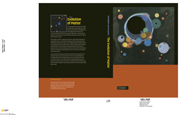Part I - The elements
Published online by Cambridge University Press: 04 September 2009
Summary
In this part of the book the processes of nucleosynthesis and the environments in which they are occurring, and have occurred are sketched out.
To understand the principles of nucleosynthesis, it is important to appreciate the factors that determine the relative stability of different nuclides, and this subject is treated in Chapter 1. The grand scene is introduced in Chapter 2, without too much detail. Chapter 3 deals with data and observations concerning the chemical and isotopic composition of stars, galaxies and the solar system. This follows a broad chronological order, starting with the D/H and He/H ratios that lend support to the hypothesis of Big Bang nucleosynthesis, following through with the most primitive stellar matter and heterogeneities in presolar grains and then focussing on the composition of the solar system. Models and explanations of these data are contained in Chapters 4 to 8, which relate the data to results derived from astrophysical modelling. This helps us to understand first how the chemical elements were and are produced and second how they were scattered in space, to be incorporated in stars and solar systems that formed later.
- Type
- Chapter
- Information
- The Evolution of MatterFrom the Big Bang to the Present Day, pp. 5 - 6Publisher: Cambridge University PressPrint publication year: 2008



